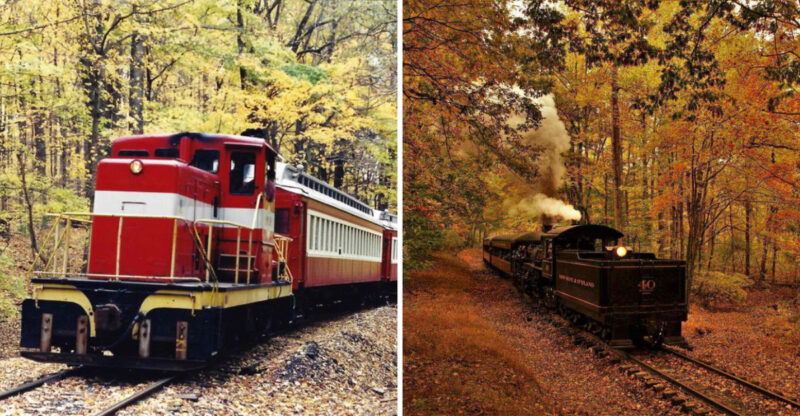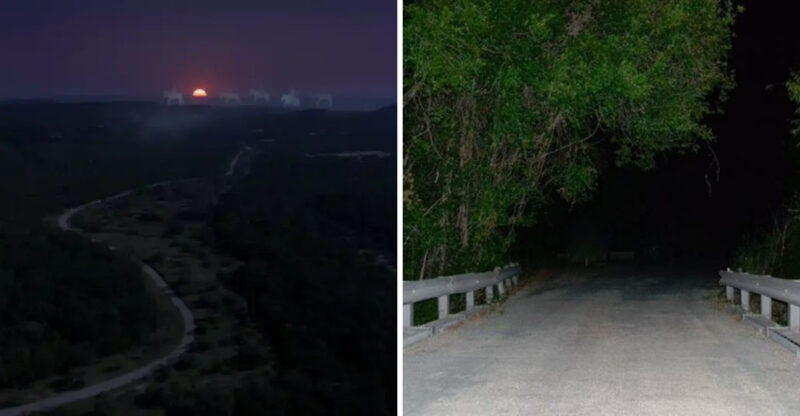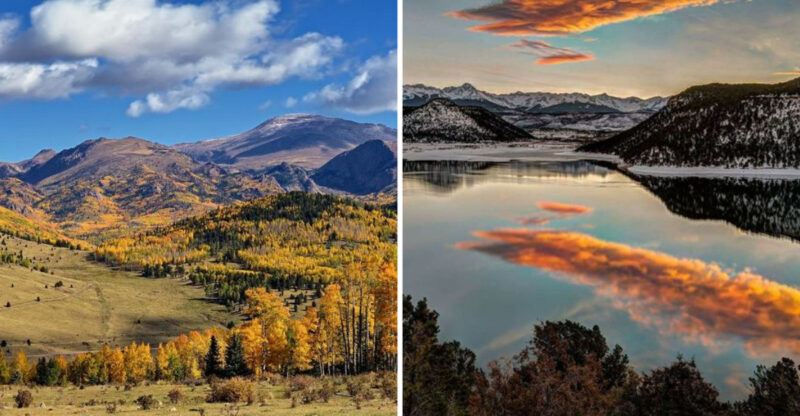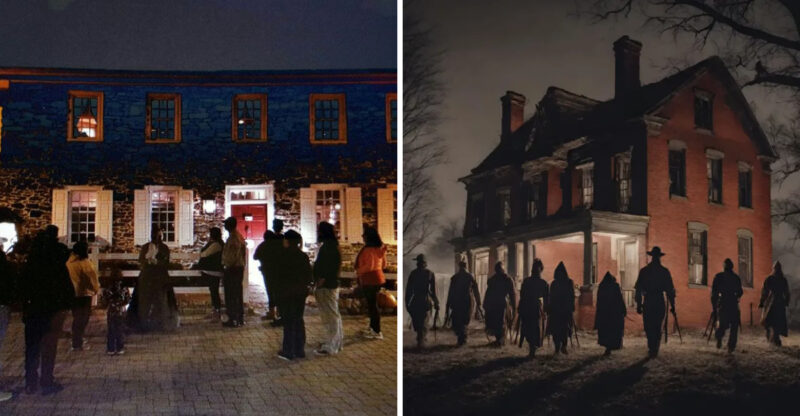15 Arizona Adventures That Bring You To Desert Trails And Otherworldly Sceneries
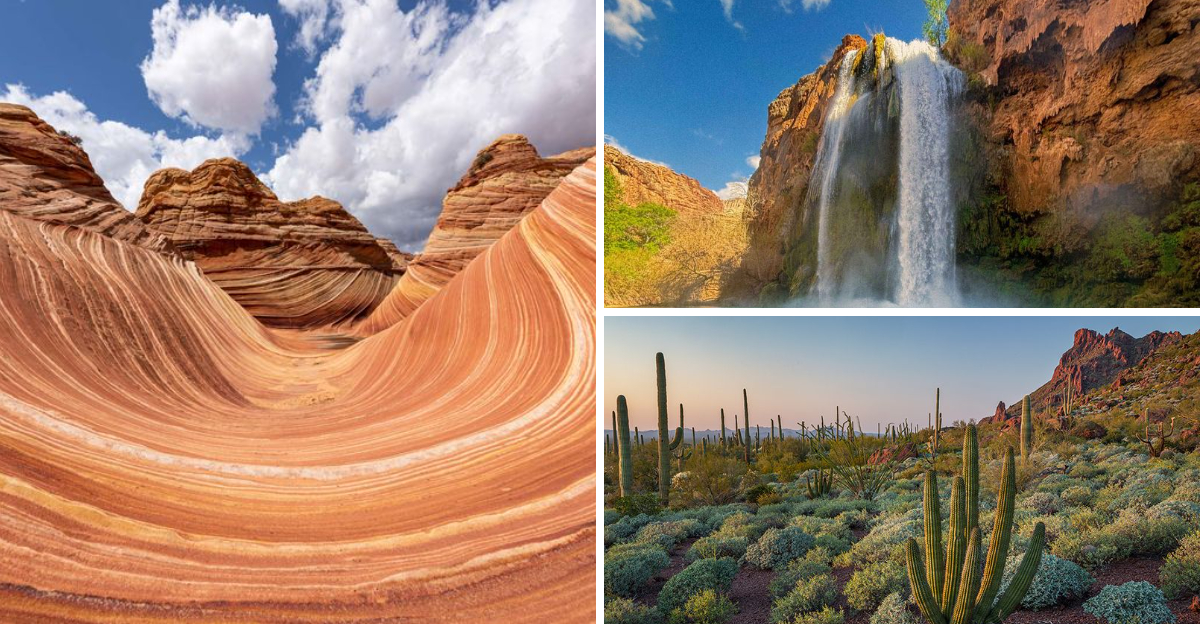
Arizona is like stepping onto another planet without leaving Earth. Imagine towering red rocks, canyons carved by ancient rivers, and sunsets that paint the sky in colors you didn’t know existed.
I’m taking you on a journey through jaw-dropping spots where desert trails meet landscapes so wild they’ll make your jaw drop and your camera work overtime.
1. Grand Canyon National Park
Standing at the rim feels like staring into Earth’s history book written in stone. Every layer tells a story millions of years old, and your brain struggles to comprehend the sheer size of it all.
It’s one of those places where photos never do justice to the real thing. Trails range from easy rim walks to challenging descents into the canyon itself.
Sunrise and sunset transform the rocks into glowing masterpieces of orange, pink, and purple. Pack plenty of water because the desert doesn’t mess around with dehydration.
2. Antelope Canyon
Walking through these narrow sandstone corridors feels like entering a sculpture gallery designed by wind and water. Light beams pierce through the openings above, creating magical displays that photographers dream about.
You’ll want to touch every smooth curve carved into the rock. Tours are required since it’s on Navajo land, and they’re totally worth it for the stories and access.
Midday brings those famous light beams, but any time offers stunning colors. Watch your step because the sandy floor can be uneven in spots.
3. Saguaro National Park
These giant cacti look like they’re waving hello with their quirky arms reaching toward the sky. Some stand over forty feet tall and have been growing for more than a century.
It’s basically a forest, but instead of trees, you get these magnificent desert giants. Hiking trails wind through thousands of saguaros, offering endless photo opportunities and wildlife sightings.
Spring brings colorful blooms to the cacti, and wildflowers carpet the desert floor. Bring a hat because shade is scarce among these prickly residents.
4. Monument Valley
You’ve definitely seen this place in movies, even if you didn’t realize it at the time. Massive rock formations jut straight up from the flat desert like ancient skyscrapers built by nature.
The Navajo Nation manages this sacred land, and their guides share incredible cultural insights. Driving the valley loop road takes you past the most famous formations with names like the Mittens.
Sunrise paints everything in warm golden light that makes the red rocks glow like embers. Respect the land by staying on designated paths and supporting local artisans.
5. Sedona Red Rock Trails
Red rocks dominate the landscape here in ways that make you question if you’re still in reality. Trails crisscross through canyons, around towering formations, and up to viewpoints that’ll steal your breath.
Many visitors claim the area has special energy, though the views alone are magical enough. Cathedral Rock and Devil’s Bridge rank among the most popular hikes for good reason.
Crowds can gather at peak times, so early mornings offer quieter experiences and cooler temperatures. Don’t forget sunscreen because that Arizona sun reflects off the red rocks intensely.
6. Canyon de Chelly
Ancient cliff dwellings peek out from the canyon walls like windows into another time period. Ancestral Puebloans built homes in these alcoves centuries ago, and their presence still echoes through the stone.
It’s a living landscape where Navajo families still farm and herd sheep on the canyon floor. Rim drives offer spectacular overlooks, but entering the canyon requires a Navajo guide except for one trail.
Stories shared by guides add depth and meaning to what you’re seeing around you. The White House Ruins trail is the only self-guided route down into the canyon.
7. Havasu Falls
Turquoise water tumbling over red rocks creates a color combination that seems impossible in the desert. This oasis requires a ten-mile hike to reach, making it feel like discovering a secret paradise.
The mineral-rich water creates those stunning blue-green pools that look photoshopped but are totally real. Permits are extremely limited and require advance planning through the Havasupai Tribe’s reservation system.
Camping near the falls lets you enjoy multiple waterfalls in the area over several days. Pack all supplies in because there’s no store once you descend into the canyon.
8. The Wave (Paria Canyon)
Swirling rock patterns look like frozen ocean waves sculpted from stone in impossible colors. Only twenty people per day get permits through a lottery system, making this one of the hardest places to access.
If you win, you’re treated to one of Earth’s most surreal geological formations. Navigation requires attention since there’s no marked trail, just coordinates and landmarks to follow.
Bring way more water than you think you need for this exposed desert hike. The formations change appearance throughout the day as sunlight shifts across the undulating sandstone.
9. Petrified Forest National Park
Trees turned to stone millions of years ago create a landscape that feels like a time machine. These aren’t rocks shaped like wood, they’re actual ancient trees now made of colorful crystals.
The Painted Desert section adds layers of purple, red, and gray badlands to the already weird scenery. Short trails let you walk among the petrified logs without needing serious hiking skills.
Taking even small pieces is illegal and supposedly brings bad luck, according to letters sent back. The park stretches along Route 66, adding vintage Americana vibes to your prehistoric adventure.
10. Tonto National Forest
This massive forest covers nearly three million acres of desert mountains, canyons, and lakes. Despite the name, you’ll find more cacti than traditional trees in many areas.
It’s basically Phoenix’s backyard wilderness playground, offering everything from easy walks to serious backcountry adventures. Lakes like Saguaro and Canyon provide water recreation in the middle of the desert.
Hundreds of miles of trails wind through diverse terrain ranging from low desert to pine forests. Wildlife sightings include javelinas, roadrunners, and, if you’re lucky, maybe even a desert bighorn sheep.
11. Arcosanti
This experimental town looks like a sci-fi movie set, but it’s an actual ongoing architectural project. Paolo Soleri designed it in the 1970s to demonstrate sustainable desert living through compact design.
Concrete structures with curved lines and futuristic shapes rise from the desert in unexpected ways. Tours explain the philosophy behind combining architecture and ecology into what Soleri called “arcology.”
Residents still live and work here, creating bronze bells and hosting events throughout the year. It’s a living laboratory proving that desert communities don’t have to sprawl endlessly across the landscape.
12. Kofa National Wildlife Refuge
Remote doesn’t begin to describe this wild corner of Arizona where bighorn sheep roam freely. Hidden palm canyons surprise visitors who expect only cactus and rocks in the desert.
The name comes from the King of Arizona Mine, abbreviated as Kofa by miners who worked here. Palm Canyon Trail leads to a rare grove of native California fan palms growing naturally.
Four-wheel drive helps on many roads since this refuge prioritizes wildlife over visitor convenience. Solitude seekers will love the lack of crowds and the raw, untouched desert landscape.
13. Chiricahua National Monument
Balanced rocks stacked in impossible ways create a wonderland nicknamed “Land of Standing-Up Rocks” by Apache people. Volcanic eruptions millions of years ago created these formations that erosion sculpted into bizarre shapes.
It’s like nature built a massive stone garden with towers, bridges, and balanced boulders. Hiking trails wind through narrow passages between towering rock pillars, offering constant surprises around corners.
Heart of Rocks Loop showcases the most dramatic formations in a moderate hike. Bring binoculars because this area hosts incredible bird diversity, earning it recognition as an important birding destination.
14. Organ Pipe Cactus National Monument
Cacti that grow in pipe-organ clusters give this remote monument its musical name. You’re right on the Mexican border, where the Sonoran Desert shows its most diverse plant life.
These particular cacti are rare in the United States, making this spot special for desert plant enthusiasts. Two scenic drives loop through the monument, showcasing different desert environments and mountain ranges.
Spring wildflower blooms transform the landscape into a colorful carpet if winter rains cooperate. Night skies here rank among the darkest in the region for spectacular stargazing opportunities.
15. Slot Canyon Adventures
Squeezing through narrow rock corridors feels like exploring secret passages carved by ancient waters. These tight canyons require some scrambling and occasional climbing but reward adventurers with stunning geology.
Little Wild Horse Canyon and similar spots offer accessible slot canyon experiences without permits or guides. Flash flood danger is real, so always check weather forecasts before entering any slot canyon.
Smooth walls show the power of water sculpting rock over thousands of years into flowing shapes. Photography becomes challenging in the narrow spaces, but the unique perspectives make every shot special.

